Reporting Invaders:
Help us catch early invaders! Report possible invasive species to: Oregon Invasive Species Hotline,http://oregoninvasiveshotline.org (best option) or 1-866-INVADER (second option).
Resources on Invasive Species:
Online
- Western Invasives Network
- Oregon Department of Agriculture
- Oregon Sea Grant AIS ID Guide
- Weed Mapper
- iMapInvasives
Print (including field & pocket guides)
- Field Guide to Weeds of the Willamette Valley. Institute of Applied Ecology, 2008. (Also available online at www.appliedeco.org)
- Plants of the Pacific Northwest Coast: Washington, British Columbia & Alaska. Lone Pine Publishing, 2004.
- Invasive Plants: Guide to Identification and the Impacts and Control of Common North American Species. Stackpole Books, 2007.
- Nonnative Invasive Plants of Pacific Coast Forests (pdf)
- GardenSmart Oregon: a guide to non-invasive plants
Links to Resources on Individual Weed Species:
Help us keep a lookout for these pesky species, many of which are not yet in the Long Tom Watershed or are popping up in isolated areas–and we want to keep it that way! “Early Detection and Rapid Response” (EDRR) is one of the most effective ways of managing the impacts of non-native invaders. Once an invader becomes established, it becomes very difficult to remove them, so EDRR is key!
Click on the name to navigate to information about that species at eitherODAorWestern Invasives Network.
Plants
-
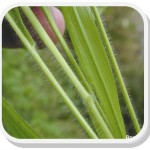
Bruce Newhouse False Brome
Key Features: Flat, bright green leaves; fine hairs on lower stem; lower part of leaf (called the sheath) easily pulls away from grass stem; younger plants look somewhat like a spreading spider, while oder plants form thicker mats.Habitat: Forest understories, along forest roads, oak savanna, and prairie
-
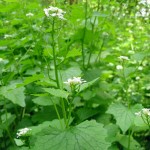
Glenn Miller, ODA Garlic Mustard
Features:kidney or heart-shaped leaves with toothed or wavy edges; clusters of white, 4-petaled flowers in spring; pungent, garlicky odor.Habitat: Partial shade of woodlands (such as oak savanna); forest edges, roads, trails, edges of agricultural land, stream sides.
-
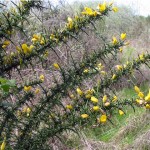
Ken French, ODA Gorse
Key Features: Evergreen, densely-branched shrub; spiny or scale like leaves; Shiny, yellow flowers (resemble pea flowers).Habitat: Disturbed areas, logged areas, pasture land, sand dunes.
-
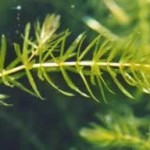
Dave Spencer Hydrilla
Key Features: Aquatic plant forms thick mats on surface; Stems have whorls of 3-8 leaves). Resemble bottle brushes near the surface.Habitat: Freshwater lakes, ponds, streams, and other waterways.
-
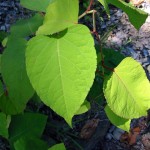
Glenn Miller, ODA Knotweed
Key Features: Includes several closely-related species (Japanese, Giant, and Bohemian). Leaves are heart-shaped, broad ovals with pointed tips; grows in dense thickets; flowers are greenish-white or cream-colored plumes that bloom in fall.Habitat: Riparian areas, waterways, and areas around human activity.
-
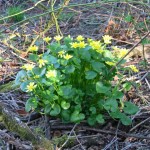
Tom Forney, ODA Lesser Celandine
Key Features: Dark green, shiny, heart-shaped leaves form spreading carpet; yellow flowers have 5-8 petals, rising from a single stalk.Habitat: Moist areas along streams, ditches, and lakes; also oak woodlands, deciduous forests, and orchards.
-
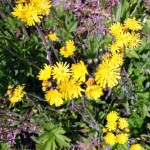
Tom Forney, ODA Meadow Hawkweed
Key Features:Bristly stems – many of them leafless; secret milky juice when crushed or broken; Up to 30 flowers appear on the stems and bloom in late spring/early summer.Habitat: Prairies, meadows, pastures, and lawns.
-
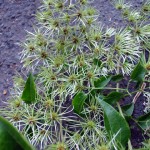
Tom Forney, ODA Old Man’s Beard
Key Features: Woody, deciduous vine; grows rapidly – up to 95 feet; opposite, compound leaves of five leaflets; Flowers lack petals and only contain greenish-white sepals and reproductive parts.Habitat: Coastal, lowland areas, forest openings, and disturbed areas west of the Cascades.
-
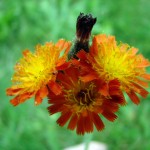
Jim Schultz Orange Hawkweed
Key Features: Perennial herb growing about 1-3 feet tall; branches at the top to produce orange-red radial flowers blooming in summer; Broken stems may emit milky juice; Few leaves – found along base of plant.Habitat: Urban areas, meadows, agricultural areas, roadsides, gravel pits, forested areas, tree plantations, and along stream sides.
-
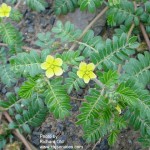
Science Society
of AmericaPuncture Vine
Key Features: Spreading, low-growing annual herb; Stems are reddish-brown that grow up to 6 feet long and produce thick mat; short, opposite leaves; fruit is a woody burr with very sharp and stiff spines.Habitat: Pastures, roadsides, orchards, vineyards, parks, trails, agricultural areas.
-
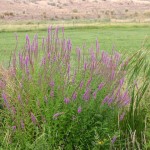
ODA Plant Division Purple Loosetrife
Key Features: Tall, upright, magenta flower spikes; simple, smoothed-edged leaves grow either opposite or whorled.Habitat: Most common in marshes or wetland areas.
-
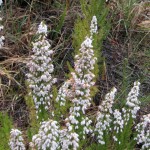
Ken French, ODA Spanish Heath
Key Features: Upright, woody, evergreen shrub; up to 10 feet tall; light green, needle like leaves only 3-7 millimeters long; leaves arranged in groups of 3 or 4 whorls around the stem; flowers area conspicuous cluster of small whitish or pinkish bell-shaped flowers; blooms from December – April.Habitat: Coastal, forest, and pasture lands.
-
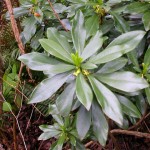
Rick Johnson,
Thurston CountySpurge Laurel
Key Features: Upright, evergreen shrub about 5 feet tall; Leaves are long, dark green, and shiny above; leaves are arranged in spiral cluster around shoot tip; bell-shaped, yellow-green flowers bloom in spring.Habitat: Well-drained soils, shady, low-light areas; found in forests, woody parts of urban areas, and roadsides.
-
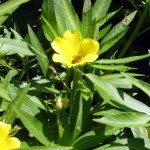
Glenn Miller, ODA Water Primrose
Key Features: Floating aquatic plant; sometimes forms mats; long, spear-shaped leaves; small, five-petaled yellow flowers.Habitat: Ditches, stream banks, ponds, slow moving waterways, shallow areas of lakes and reservoirs.
-
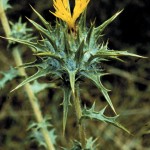
Ken French, ODA Woolly Distaff Thistle
Key Features: Annual plant flowering in summer; grows up to about 3-4 feet tall; leaves arranged alternately on stem, long and stiff spines form on the leaves; yellow flowers form on spiny heads.Habitat:ÂPasture and range lands.
-
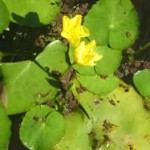
Glenn Miller, ODA Yellow Floating Heart
Key Features: Aquatic perennial; roots into bottom in shallow water; floating leaves are heart-shaped or circular; bright yellow, five-petaled flowers are about 1 inch in diameter.Habitat: Slow moving waterways, lakes, and reservoirs.
Animals
-
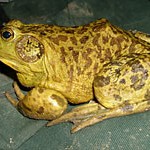
Photo: ODFW American Bullfrog
Key Features: Typically green with brown spots; larger than any native frog in the Northwest (can grow over 6 inches long); long, powerful hind legs; adults have golden eyes; males loud, distinct mating call.Habitat: Freshwater ponds, lakes, reservoirs, sloughs, streams, and irrigation canals.
-
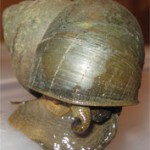
Photo: ODFW Chinese Mystery Snail
Key Features: Strong shells are single-colored without bands or stripes; shells are light or dark olive green; black rounded outer lip of shell.Habitat: Freshwater ponds, lakes, reservoirs, sloughs, slower waterways, and irrigation ditches; prefers muddy bottoms.
-
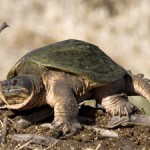
Photo: ODFW Common Snapping Turtle
Key Features: Huge freshwater turtle – larger than any native Oregon turtle; dark head has larage, powerful jaws; legs and tail are thick and yellowish; dark shell varies in color.Habitat: Freshwater ponds, lakes, reservoirs, sloughs, slower waterways, and irrigation ditches; prefers muddy bottoms.
-
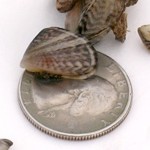
Photo: ODFW Quagga & Zebra Mussels
Key Features: Small – usually no more than 1 inch long; both mussels have dark black and white banded pattern on shell.Habitat: Most commonly freshwater lakes, reservoirs, and rivers – spread via boat traffic.
-
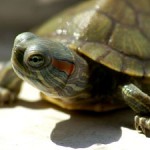
Photo: ODFW Red-eared Slider
Key Features: Greenish-gray head with red patch behind eyes; yellow or whitish line across head; top of shell is smooth and greenish gray or brown.Habitat: Ponds, lakes, and slow moving waterways.


